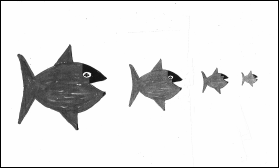Mercury Emissions: Messengers of Disease
 One litany that is sung at every convocation of Republican presidential hopefuls is that the EPA must go; it is environmental regulations that are strangling our industrial might and keeping it from employing every American who wants a job. None of the candidates refer to the regulation-free era before the Clean Air and Clean Water acts, when the sludge covering many of our major rivers regularly caught on fire and many cities were often hidden by smog.
One litany that is sung at every convocation of Republican presidential hopefuls is that the EPA must go; it is environmental regulations that are strangling our industrial might and keeping it from employing every American who wants a job. None of the candidates refer to the regulation-free era before the Clean Air and Clean Water acts, when the sludge covering many of our major rivers regularly caught on fire and many cities were often hidden by smog.
Despite such protestations, the EPA moves forward, if much too slowly for most environmental desires. Just a couple of months ago, in August, the agency finally (after 20 years of study) ruled that cement plants have to reduce their emissions of mercury by 92 per cent. Since it is estimated that American cement plants currently emit some 18,000 pounds of mercury into the air each year, that means that in 2012 alone, we will breathe 16,600 fewer pounds of mercury than we did in 2011.
This, of course, is only a fraction of the 150,000 pounds of mercury released into the air nationally each year by other man-made sources such as coal. Although the coal industry’s mercury emissions have been regulated since 2005, the industry has held much of the regulations at bay. Instead of putting their money where it would do the most good for all of us, the coal companies have been putting most of it into lawyers, who have been fighting the regulations tooth and nail. But that is not today’s story.
Even if the mercury from the manufacture of cement is a fraction of the mercury we – and the rest of the world – produce, the saving of 16,000 pounds is significant because even in extremely tiny quantities, mercury can be very toxic. The EPA has put most American lakes off limits for mercury pollution because they contain more than 114 nanograms (1 billionth of 1 gram) per liter. In potable water, the limit for ingestion is a mere 2 nanograms.
 The emphasis on mercury in water is not coincidental. The most toxic form of mercury is methylmercury. Water released into the air is absorbed into bodies of water and transformed into methylmercury by bacteria in the water. While the concentration in the water may remain relatively low, the bacteria that have absorbed the mercury are at the bottom of a food chain. The small organisms that live on them are eaten by larger ones, and those, in turn, by larger ones still. By the time we get to the size of fish that humans0 consume, we are often0 eating creatures laced with methylmercury.
The emphasis on mercury in water is not coincidental. The most toxic form of mercury is methylmercury. Water released into the air is absorbed into bodies of water and transformed into methylmercury by bacteria in the water. While the concentration in the water may remain relatively low, the bacteria that have absorbed the mercury are at the bottom of a food chain. The small organisms that live on them are eaten by larger ones, and those, in turn, by larger ones still. By the time we get to the size of fish that humans0 consume, we are often0 eating creatures laced with methylmercury.
Methylmercury does most of its damage by harming the nerve sheath, which acts s like an insulator, enabling nerves to conduct. That is why mercury damage shows up as disturbed brain and motor function and this is the reason it has especially severe effects on fetal development, damaging children’s growing brain and nervous system. “Impacts on cognitive thinking, memory, attention, language, and fine motor and visual spatial skills have been seen in children exposed to methylmercury in the womb,” according to the EPA. As the most prevalent form of mercury poisoning comes from eating fish with high levels of mercury, we are warned to limit our intake of predator fish, such as tuna and trout, which eat other fishes, and consider instead shrimp or salmon, which are vegetarian.
 Considering that there are over 28 grams in every ounce and some 450 in a pound, putting even 18,000 pounds a year into the environment seems like a recipe for disaster. If it were evenly dissolved in the 1300 trillion liters that make up Lake Michigan, it would put that lake off limits for human use. However, as most of the mercury that is emitted by polluters is absorbed and assimilated at the lake surface, the situation is much worse. In fact, that single annual dose is sufficient to poison all the Great Lakes, which is why eating the fish that swim in them is no longer recommended.
Considering that there are over 28 grams in every ounce and some 450 in a pound, putting even 18,000 pounds a year into the environment seems like a recipe for disaster. If it were evenly dissolved in the 1300 trillion liters that make up Lake Michigan, it would put that lake off limits for human use. However, as most of the mercury that is emitted by polluters is absorbed and assimilated at the lake surface, the situation is much worse. In fact, that single annual dose is sufficient to poison all the Great Lakes, which is why eating the fish that swim in them is no longer recommended.
Our rates of cancer and children born with various defects increases every year. We don’t just need more regulation. We need regulation that is enforced with financial and legal consequences that make is much cheaper and easier to comply than it is to pay the fines or pay lawyers to fight it. If that means higher rates for water and power, we should be willing to pay the tariff, but we need to be clear about our options: an electric bill that goes up by 15 per cent, or medical bills for damaged children and sick people that go up nationally by 15 per cent each year for all of us.


